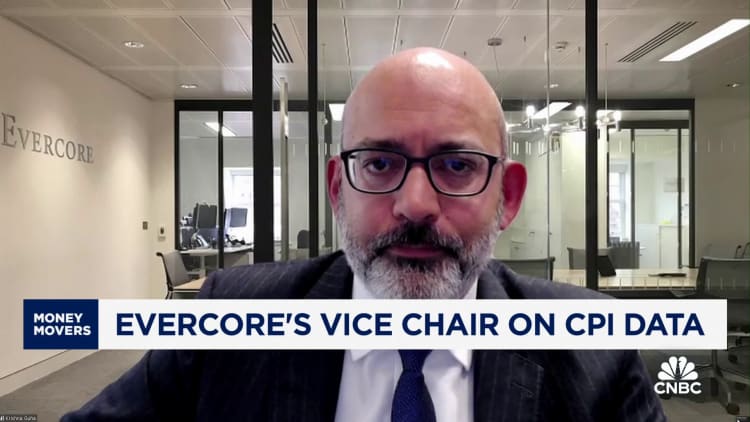
Traders work on the trading floor of the New York Stock Exchange on the afternoon of April 9, 2024 in New York City.
Michael M. Santiago | Michael M. SantiagoGetty Images
As recently as January, investors had high hopes that the Federal Reserve would cut interest rates to reverse the most aggressive policy tightening in decades.
Three months of inflation data brought those expectations back to reality.
The March consumer price index report released on Wednesday confirmed concerns that inflation is more troublesome than thought, lending credence to the caution of Federal Reserve policymakers and ultimately dashing market expectations that the Fed will Hopes of approving as many as seven rate cuts.
“The math shows it’s going to be very difficult to get inflation down to the Fed’s target in the short term,” said Liz Ann Sanders, chief investment strategist at Charles Schwab. “It’s not that you’ve stopped inflation from reaching the Fed’s target, but It doesn’t happen immediately.”
The Labor Department’s consumer price index report didn’t bring good news.
Monthly and annual figures for all items, as well as food and energy data, were above consensus, keeping inflation well above the Fed’s target. The overall CPI rose 0.4% this month, 3.5% higher than the same period last year, higher than the central bank’s 2% target.
dangers beneath the surface
But beyond the headline numbers, other danger signs are emerging.
Prices for services excluding energy rose 0.5% and were up 5.4% from the same period last year. The market is following a relatively new calculation that takes core services and subtracts housing — it’s called “supercore” and is closely watched by the Fed — to surge 7.2% annualized and rise in three years 8.2%. Month-to-year basis.
There is another risk that the “base effect,” or comparison with previous periods, will make inflation look worse because energy prices are rising after falling in the same period last year.
All of this has left the Fed on hold, with markets worried that it may not cut interest rates this year.
CME Group’s Fed Watch ToolCalculating the probability of an interest rate cut shown in futures market pricing has changed dramatically after the release of CPI. Traders now see little chance of a rate cut at the June meeting, which had previously been favored. They also delayed the first cuts until September and now expect just two cuts by the end of the year. Traders even put a 2% chance of no production cuts in 2024.
“Today’s disappointing CPI report makes the Fed’s job more difficult,” said Phillip Neuhart, director of markets and economic research at First Citizens Bank Wealth. “The data do not completely eliminate the possibility of action by the Fed this year.” , but it certainly reduces the likelihood that the Fed will cut overnight rates in the coming months.”
Market Reaction
Of course, the market doesn’t like CPI news; The sell-off was sharp on Wednesday morning.this Dow Jones Industrial Average fell more than 1%, and Treasury yields rose sharply.this two year treasury billThe index, which is particularly sensitive to Fed interest rate trends, jumped to 4.93%, an increase of nearly 0.2 percentage points.
There may also be good news on inflation in the future. Joseph LaVorgna, chief economist at SMBC Nikko Securities, said factors such as improvements in productivity and industrial capacity, as well as slower money creation and falling wages, could provide some relief.
However, “inflation will remain higher than necessary for the Fed to ease policy,” he added. “In this regard, the Fed’s interest rate cut will be delayed until the second half of this year, and may only fall by 50 basis points (0.5 percentage points), and risks will tilt towards a more accommodative direction.”
In some ways, this can only be blamed on the market itself.
The pricing of seven rate cuts earlier this year was completely inconsistent with signs from Fed officials. However, when policymakers raised their “dot plot” indicator in December to three rate cuts from the two expected in September, it sparked a frenzy on Wall Street.
“In this hypothesis, the market is outperforming snowboards by a wide margin,” Schwab’s Saunders said. “That doesn’t make sense based on the data.”
Nonetheless, she believes that if the economy remains strong – GDP is expected to grow by 2.5% in the first quarter – According to the Federal Reserve Bank of Atlanta –The knee-jerk reaction to Wednesday’s data may pass.
“If the economy remains stable, I think the market is largely good,” Sanders said.








